A few more from this run of clear October skies
A few more processed (to some degree) images from the data I have gathered over the last five clear nights. Gear notes: I captured all the data for these in my backyard with an Apertura 800mm f/4 Newtonian OTA, ZWO ASI1600MM-Pro mono camera, Antlia 3nm filters, ZWO ASI290M OAG, on the Sky-Watcher EQ6R-Pro mount with the ZWO ASIAir Plus controller.
The core of the Heart Nebula (IC 1805) in Ha+OIII with the star cluster, Melotte 15 surrounding coils and branches of interstellar dust and gas.
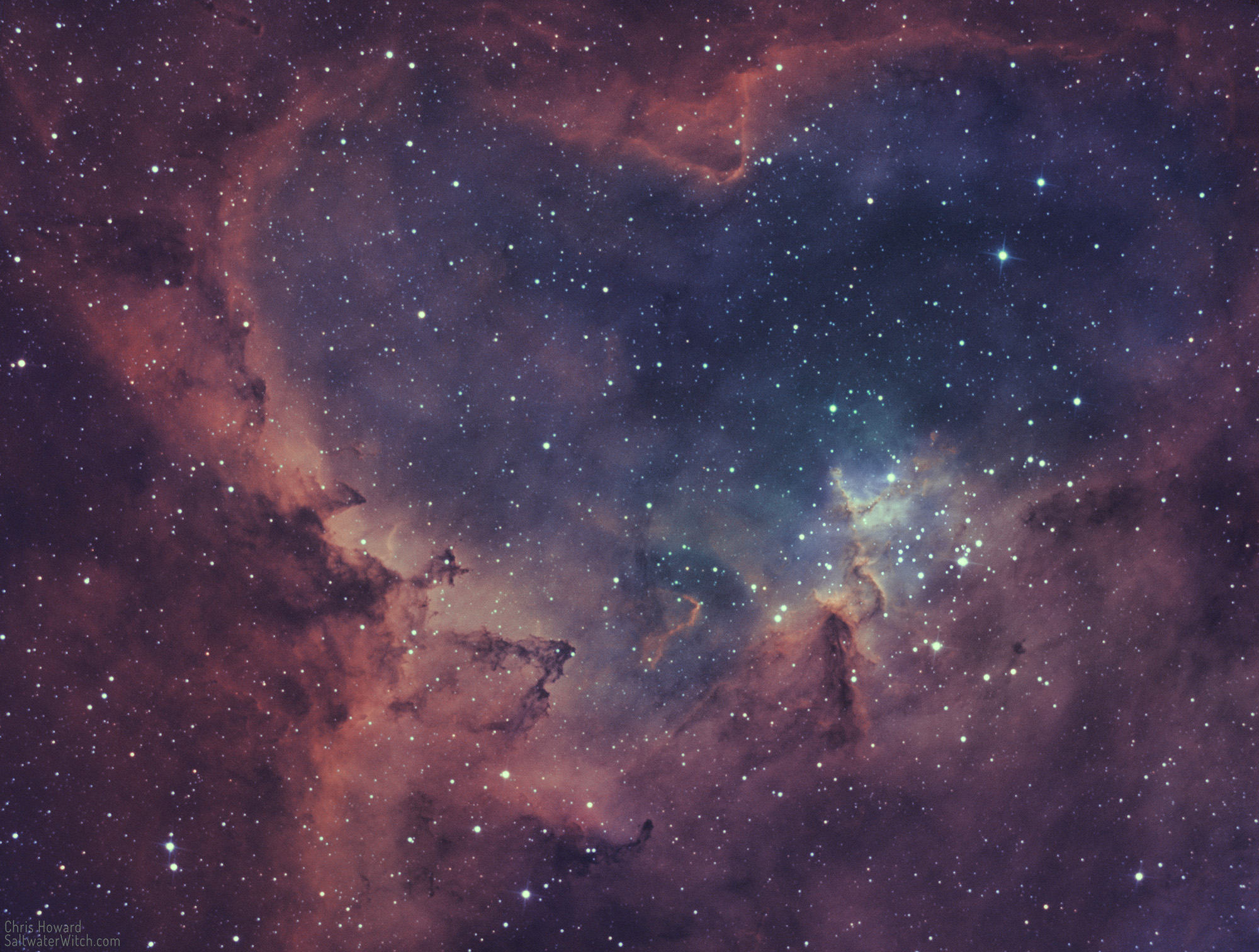
Here's the Tulip Nebula (Sharpless 101) in Ha + OIII, a very energetic HII region about 6000 lightyears away in the constellation Cygnus.
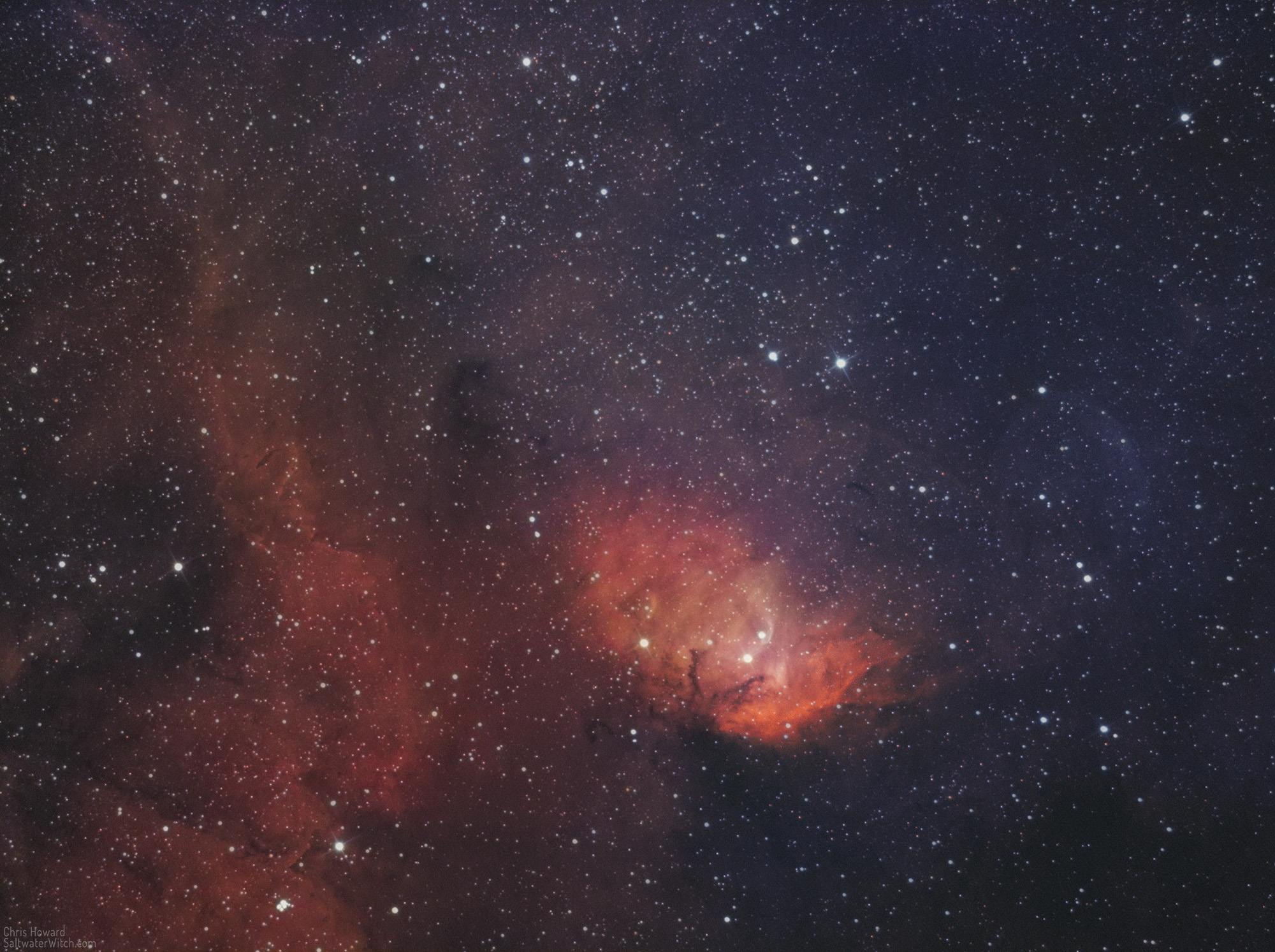
The Jellyfish Nebula (IC 443, Sharpless 248) in hydrogen-alpha. IC 443 is a (Sh2-248)) is a supernova remnant about 5000 lightyears away in the constellation Gemini. Trailing off, out of frame top left, is the HII region Sharpless 249. There's ongoing research to determine if these two interact, but they probably do not. SH2-249 is most likely further away than the IC 443 supernova remnant. [https://ui.adsabs.harvard.edu/abs/1984A%26A...140..395D]
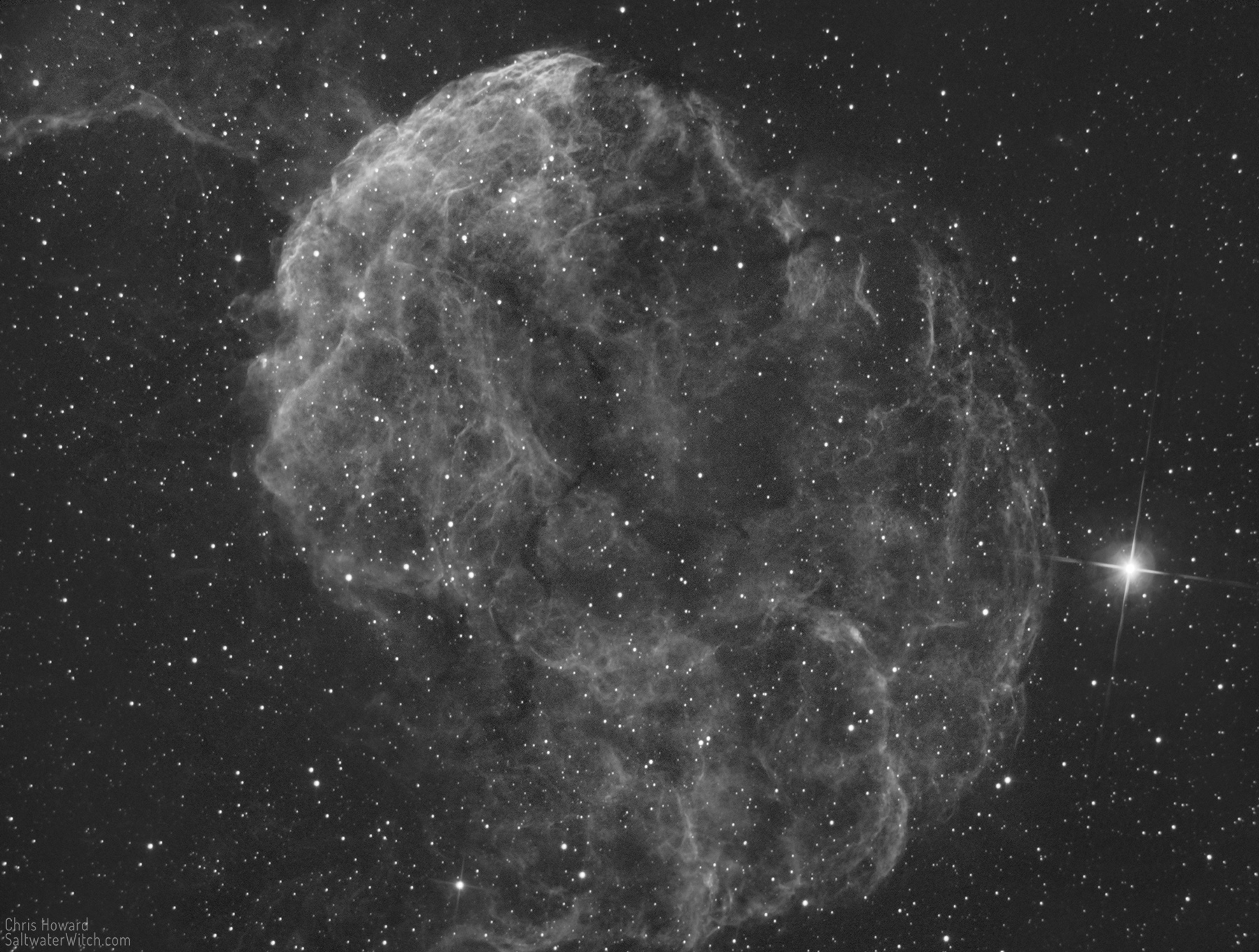
Posted October 23, 2022
The Rosette in Ha
The Rosette Nebula (Sh2-275, Caldwell 49) is an HII region and star forming complex in the constellation Monoceros, about 5,200 lightyears away and about 130 lightyears across. The dark chain of interstellar gasses and dust along the bottom is punctuated with Bok Globules, dense regions of star formation. The open cluster of massive blue stars in the center (NGC 2244) are responsible for ionizing the surrounding hydrogen, oxygen, and other gasses; bathed in the intense radiation from these stars, the clouds themselves emit light. These giant stars originally formed out of the nebula and they're now in the process of hollowing out the cloud structure and creating the bubbles of ionization visible around the nebula's core.

Posted October 21, 2022
The Elephant's Trunk in Ha
IC1396A, the Elephant's Trunk Nebula, is a twisted towering structure of interstellar gas and dust, back-lit and ionized by the intense radiation of the massive star just above it (HD 206267, HR 8281). The nebula's mix of organic and geometric shapes rimmed in light makes it stand out amid the eerie streams and swirls of dark nebulae and the backdrop clouds of ionized hydrogen that make up the expansive IC1396 HII region in the constellation Cepheus. The Elephant's Trunk is about 2,400 lightyears away and towers about 25 lightyears, or almost 150 trillion miles top to bottom (236 trillion kilometers). Imaging notes: 30 x 300-second subs in Ha, stacked in DSS. Apertura 800mm f/4 Newtonian OTA, ZWO ASI1600MM-Pro mono camera, Antlia 3nm Ha filter, ZWO ASI290M OAG, on the Sky-Watcher EQ6R-Pro mount with the ZWO ASIAir Plus controller.

Posted October 20, 2022
The moon is bright and the clouds are fast
So, I've been goofing around with hardware, updated NINA and plugins, getting ready for the next clear night. It's raining right now. I was looking at some narrowband data for Sharpless 2-199 (Soul Nebula) I captured late last year and reprocessed the Ha data. I am especially fascinated by the differences in depth and darkness between the background and the bands of dust and interstellar gasses that twist in front of the Soul Nebula, between us and the high-energy emission of the towering clouds of hydrogen beyond. Someone commented (I think on AstroBin) on another image of mine with similar properties—that I needed to bring up the black point, that the night sky is black. But why? Who says so? The data says the background isn't as dark as the dust, so why would I want to lose that difference?

Posted June 17, 2022
Narrowband "Flying Bat" Nebula in Ha (sans squid)
I finally started gathering Hydrogen-alpha data for the Flying Bat nebula (Sh2-129) in the constellation Cepheus. What you do not see in Ha is the large, squidlike structure of oxygen that stretches from the top corner of the Bat, through those bright stars, to about the middle of the nebula For the "Squid Nebula" (OU4) I need to come back on another night to capture the OIII. The small circular reflection nebula at the top left is vdB-140. The dark nebula on the right is Barnard 152.
Notes: 67 x 300 second subs, stacked in DSS. Gear: William Optics SpaceCat51 Apo Refractor, ZWO ASI1600MM-Pro mono camera, Antlia Pro 3nm Ha filter, Sky-Watcher EQ6R Pro equatorial mount.
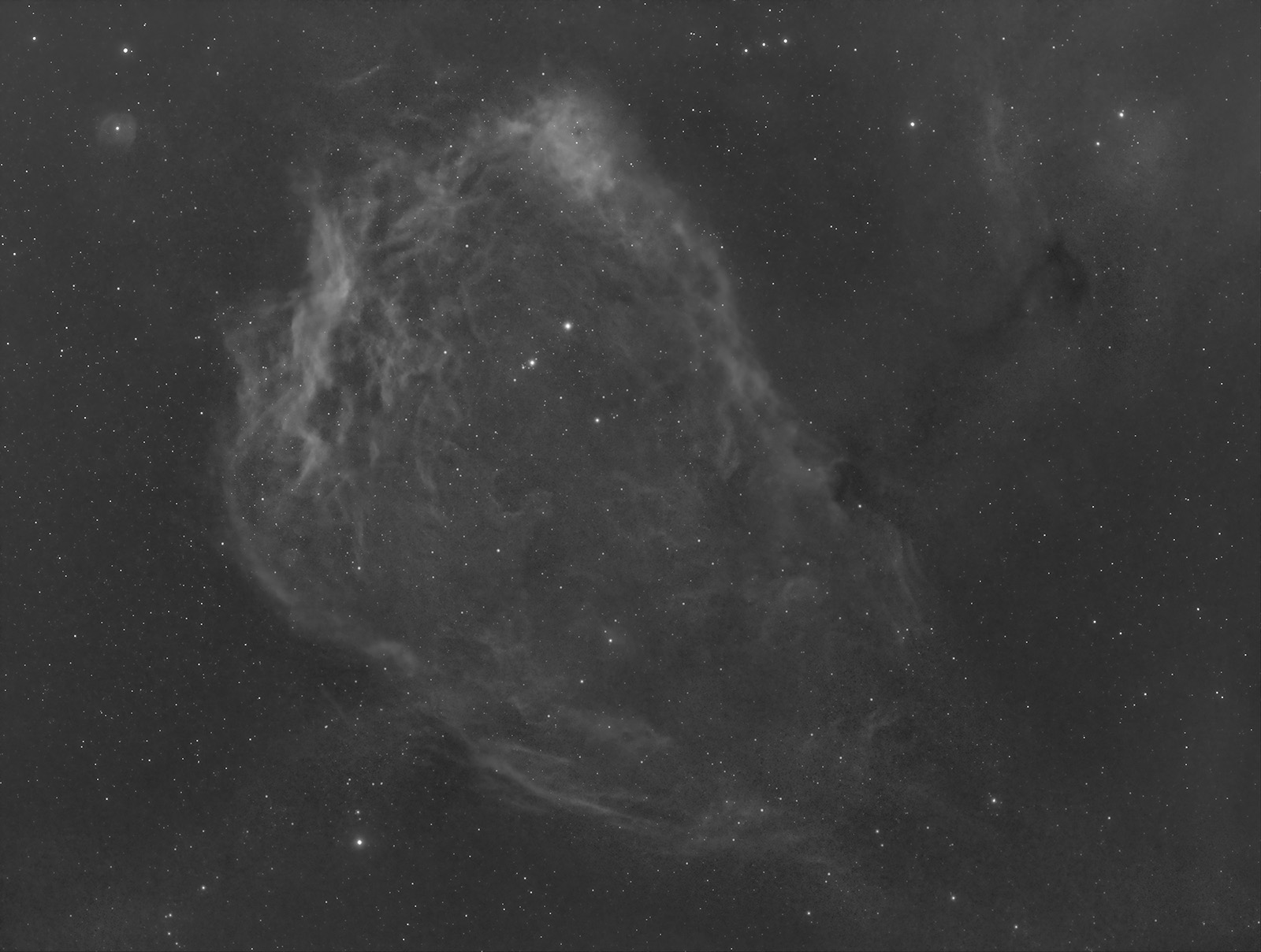
Posted May 12, 2022
NGC 7000, IC 5070
North America Nebula (NGC 7000, left) and Pelican Nebula (IC 5070, top right) in the constellation Cygnus. Narrowband in the SHO palette. 68 x 240 second subs in Ha, OIII, SII. I kept the Hydrogen (green) levels pretty even.
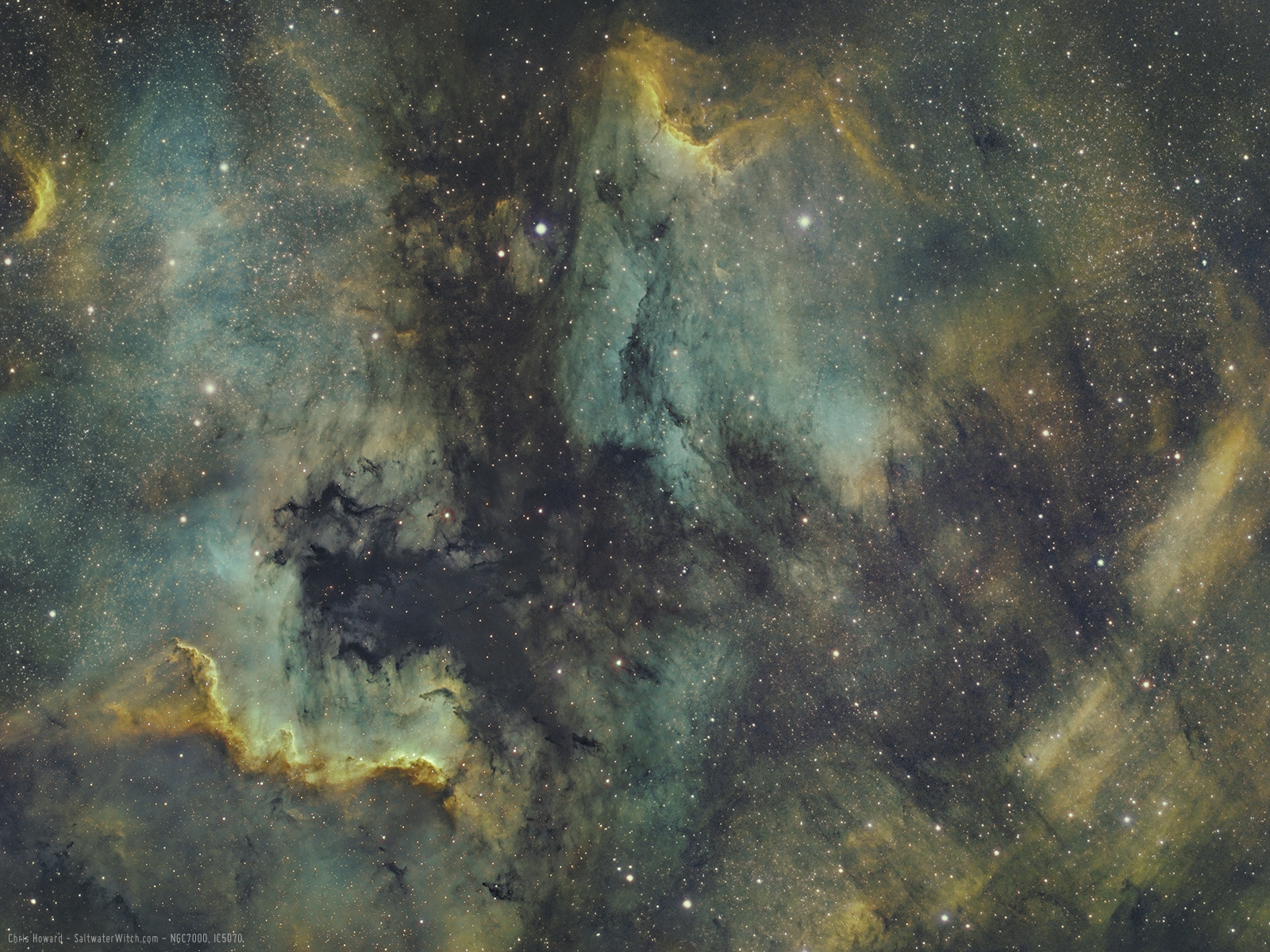
Posted April 30, 2022
NGC 281, IC11, the Pacman Nebula in Ha
A wide-field narrowband (hydrogen-alpha) image of the Pacman Nebula in Cassiopeia. This emission nebula is a little under 10,000 lightyears away in the Perseus Spiral Arm of our galaxy, and it doesn't seem quite large enough for this view--except to show that Pacman is alone out there in this region of space (from our perspective). And that's one of the many cool aspects that makes NGC 281 fascinating to capture--there are so many others, an intense star-forming region, it's a great Hubble palette target, large examples of bok globules, X-ray imaging reveals a dense molecular clouds of hydrogen and carbon, feeding the process of star-creation, to name a few.
The double star eta Cassiopeiae (η Cassiopeiae) is the bright point of light above Pacman/IC 11 (brightest in the frame). Eta Cass. is made up of eta Cassiopeiae A, a sun-like G-type main-sequence star, and its smaller K-type orbiting companion, eta Cassiopeiae B. With a little research, this might be a cool SF world to tell a story around--the main star is like ours, but with an additional sun orbiting. And it's only 19.5 lightyears away.
Imaging notes: 57 x 300-second subs in 3 nanometer hydrogen-alpha. No calibration frames. Guiding was better than expected, with total RMS hovering between .7 and .9 arcseconds. Seeing was below average--astronomical seeing, which is impacted by turbulence and temperature differences in the atmosphere. It's pretty common to have a clear night with terrible seeing. There's a time and place for twinkling stars--like writing a song, but they're the bane of astrophotographers. Gear notes: ZWO ASI1600MM-Pro monochrome camera, Antlia 3nm Ha Pro narrowband filter, William Optics SpaceCat 51 apochromatic refractor, Sky-Watcher EQ6-R Pro mount.
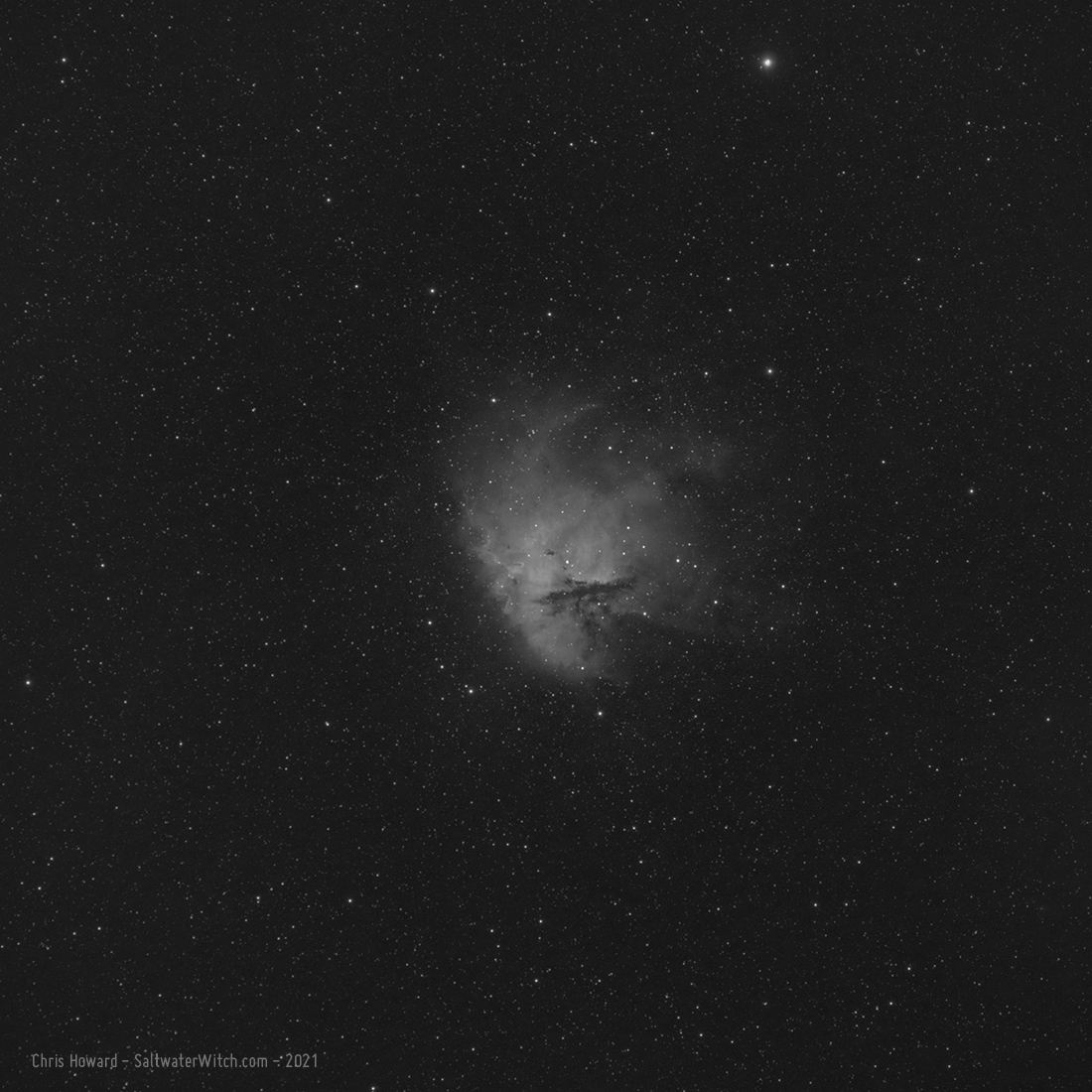
Posted November 25, 2021
NGC 281 - Pacman Nebula
Narrowband version of NGC 281, the Pacman Nebula in Cassiopeia.

